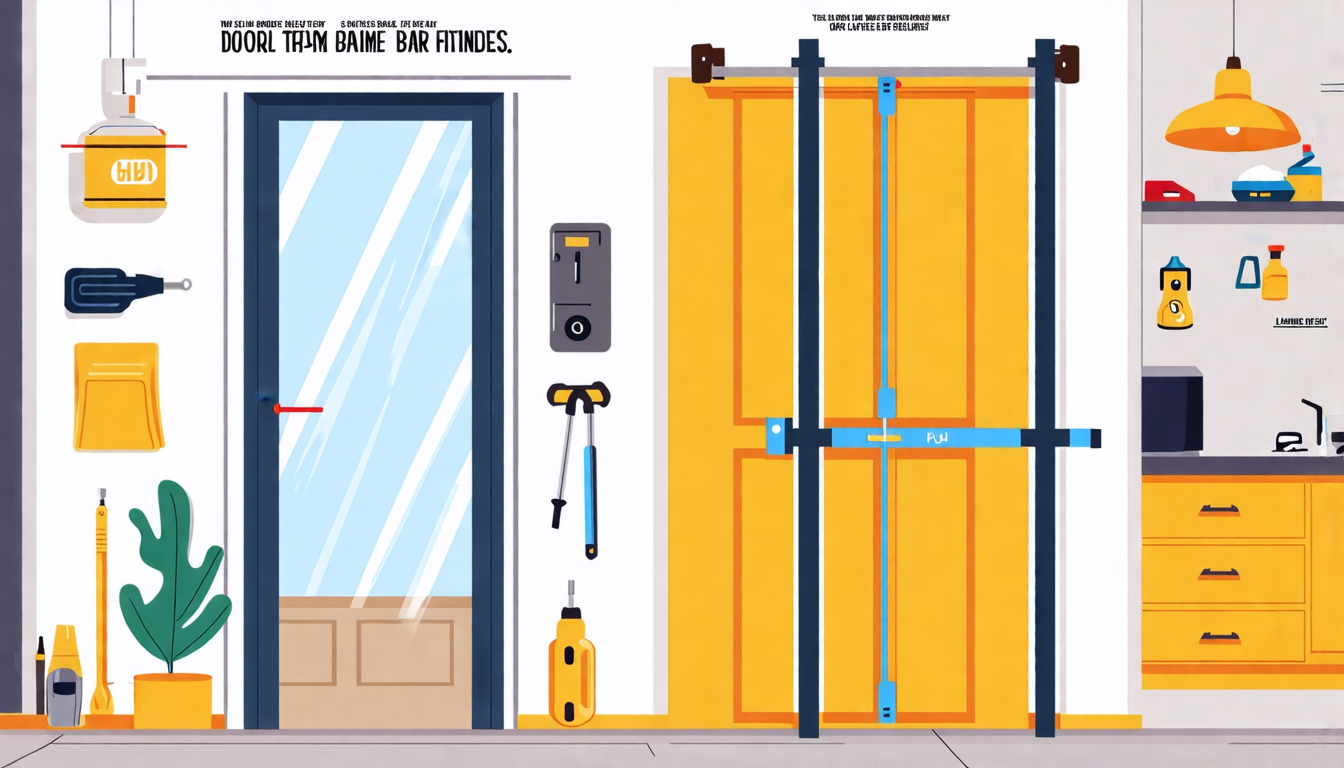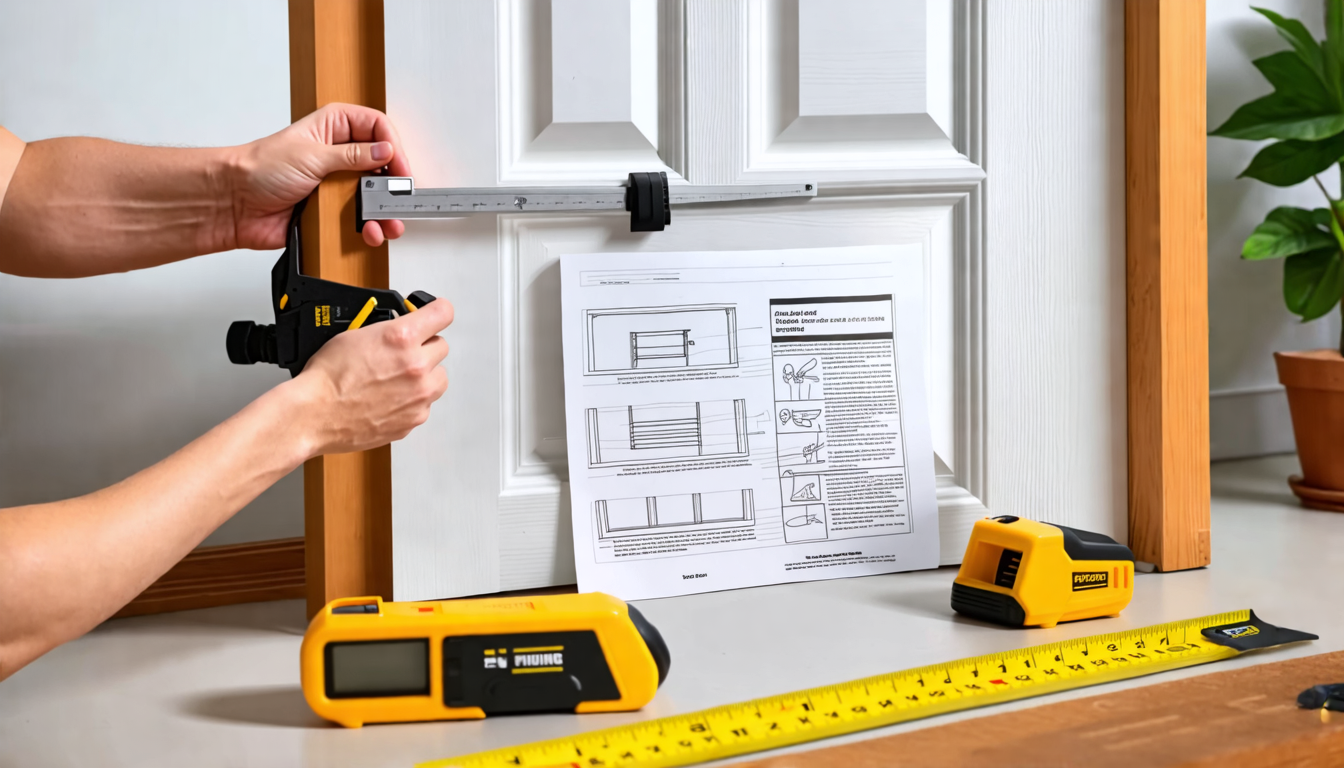If you’re looking to elevate your home fitness routine without crowding your space with bulky equipment, a door-frame fitness bar might be just what you need. These compact yet versatile fitness tools allow you to perform a range of upper body exercises, including pull-ups, chin-ups, and even leg raises, all from the comfort of your own home. Due to their space-saving design and ease of use, door-frame fitness bars have become increasingly popular among fitness enthusiasts and beginners alike.
There are several types of door-frame fitness bars to choose from, each catering to different needs and preferences. Tension-mounted bars are designed to grip the door frame without the use of screws, making them easily removable. Brackets-mounted bars offer a more permanent setup, attaching to the top of the door frame with brackets that can hold more weight. Screw-in bars, as the name suggests, are secured by screwing them directly into the door frame, providing maximum stability for your workouts.
Understanding how to install these bars safely is crucial to preventing accidents and ensuring you get the most out of your home workout. The first step is to choose the right door frame, one that’s sturdy enough to support your weight without giving in. This involves measuring the width and assessing the frame’s strength to ensure it can handle the stress of regular use. From there, you’ll need to follow specific installation steps for each type of door-frame fitness bar. Using the right tools and adhering to safety precautions are essential to creating a safe and effective workout environment in your home.
Understanding Door-Frame Fitness Bars
Introduction to Door-Frame Fitness Bars
A door-frame fitness bar, commonly known as a pull-up or chin-up bar, is a versatile piece of equipment designed to be mounted on a door frame for upper body exercises. These bars are incredibly popular among fitness enthusiasts and those who prefer home workouts due to their convenience and effectiveness. With a door-frame fitness bar, you can perform a variety of exercises that target different muscle groups, including pull-ups, chin-ups, leg raises, and even hanging leg lifts, making it an essential tool for building strength and endurance.
Types of Door-Frame Fitness Bars
Tension-Mounted Bars
Tension-mounted door-frame fitness bars are a popular choice for those who prefer a non-invasive installation method. These bars use tension to stay in place and can be easily removed without leaving any marks or damage to the door frame. They are particularly favorable for renters or individuals who want a temporary setup. The bar typically has rubber ends that press against the sides of the door frame, creating enough friction to support your body weight during exercises.
Brackets-Mounted Bars
Brackets-mounted door-frame bars offer more stability compared to tension-mounted bars but require a bit more effort during installation. These bars come with support brackets that need to be screwed into the door frame. Once the brackets are securely attached, the bar can be slotted into place. Brackets-mounted bars provide a sturdy and reliable setup, ensuring that the bar remains fixed even during intensive workouts. While this type of bar does leave some minor screw holes, the increased stability and safety they offer can be well worth the trade-off.
Screw-In Bars
Screw-in door-frame fitness bars are perhaps the most secure option available. These bars are designed to be permanently installed into the door frame with screws, ensuring maximum stability and weight-bearing capacity. While the installation process is more complex and leaves permanent marks on the door frame, the trade-off is a high level of reliability. Screw-in bars can support more weight than both tension-mounted and brackets-mounted bars, making them an ideal choice for more advanced fitness enthusiasts who require uncompromised stability for their workouts.
Why Choose a Door-Frame Fitness Bar?
Investing in a door-frame fitness bar for your home gym can transform your exercise routine. Not only are they space-saving, but they also offer a quick and effective way to build upper body and core strength without requiring expensive gym memberships or bulky equipment. Their ease of installation and versatility make them a go-to for anyone looking to improve their fitness levels from the comfort of their home.
Benefits of Each Type
Each type of door-frame fitness bar has its own set of advantages:
- Tension-Mounted Bars: Easy to install and remove, great for temporary setups, and leave no damage to the door frame.
- Brackets-Mounted Bars: Offer improved stability, relatively easy to install, and still removable with minimal damage.
- Screw-In Bars: Provide the highest level of stability, support the most weight, and are ideal for more vigorous workout routines.
Choosing the Right Door-Frame Fitness Bar
Selecting the right door-frame fitness bar depends on your individual needs and preferences. Consider the type of exercises you plan to perform, the amount of weight-bearing capacity you require, and whether you need a permanent or temporary setup. Additionally, assess the door frame’s strength and dimensions to ensure compatibility with the fitness bar you choose.
By understanding the different types of door-frame fitness bars available, you can make an informed decision that best suits your home fitness needs. Whether you opt for a tension-mounted, brackets-mounted, or screw-in bar, each type provides unique benefits to enhance your workout routine effectively.

Step-by-Step Guide to Safely Installing a Door-Frame Fitness Bar
Choosing the Right Door Frame
Before diving into the installation process, the first and most crucial step is to choose the right door frame. Selecting a sturdy door frame is essential for ensuring the safety and stability of your door-frame fitness bar.
Start by thoroughly inspecting the door frame you intend to use. Look for signs of wear and tear, such as cracks or warping, which could compromise the frame’s integrity. It’s best to avoid door frames made of hollow wood or thin materials, as these may not support the weight and stress applied during workouts.
Measure the width of the door frame to ensure it can accommodate the door-frame fitness bar. Most bars are designed to fit standard door frames, but double-check the specifications of your bar against the width of your door frame. Additionally, assess the trim and molding around the door. Ensure they are secure and will not interfere with the installation process.
For an added layer of safety, consider the surrounding area where you will be installing the fitness bar. Make sure there’s enough space around the door frame for performing various exercises without obstructions.
Installation Instructions
Now that you have identified a suitable door frame, let’s go over the installation process for different types of door-frame fitness bars: tension-mounted bars, brackets-mounted bars, and screw-in bars. Each type has its unique installation method and requirements.
Tension-Mounted Bars
These are perhaps the easiest to install and generally require no permanent modifications to the door frame. Follow these steps to ensure a safe installation:
- Assemble the Bar: Follow the manufacturer’s instructions to assemble the tension-mounted bar. This typically involves extending the bar to the desired width of the door frame.
- Position the Bar: Hold the bar up to the desired height within the door frame. Ensure it is level and centered.
- Adjust the Tension: Twist or extend the bar to create tension against the door frame. Secure it tightly to prevent slipping.
- Check for Stability: Give the bar a firm tug and press down on it to ensure it is securely positioned. If it moves or slips, readjust and increase the tension.
Safety Tip: Always double-check that the rubber ends of the bar are in full contact with the door frame to avoid damaging the frame and to prevent the bar from slipping.
Brackets-Mounted Bars
Brackets-mounted bars offer more stability compared to tension-mounted bars and are suitable for more intense workouts. Here are the steps for installation:
- Mark the Positions: With the assembled bar, hold it up to the door frame at the desired height. Use a pencil to mark the positions for the brackets on either side of the door frame.
- Pre-Drill Holes: Use a drill to create pilot holes where you marked the positions for the brackets. This will make it easier to screw in the brackets and help prevent the wood from splitting.
- Install the Brackets: Using the screws provided with the bar, attach the brackets to the door frame. Ensure the brackets are aligned correctly and secure them tightly.
- Attach the Bar: Once the brackets are firmly in place, attach the bar to the brackets. Ensure it snaps or locks into place as per the manufacturer’s instructions.
Safety Tip: Periodically check the brackets and screws for any signs of loosening or wear, and retighten as necessary.
Screw-In Bars
Screw-in bars provide the highest level of stability and are ideal for users who plan to frequently use the bar for rigorous workouts. Follow these steps to install a screw-in bar:
- Measure and Mark: Place the bar at the desired height and use a pencil to mark the locations where the screws will be placed on the door frame.
- Pre-Drill Holes: Drill pilot holes at the marked positions. This will facilitate easier screwing and reduce the likelihood of wood damage.
- Screw the Bar into Place: Align the bar with the pilot holes and use an electric screwdriver or a manual one to fix the bar securely in place. Tighten each screw gradually to ensure even pressure distribution.
- Test the Installation: After securing the bar, apply pressure and pull at different angles to ensure it is firmly installed and stable.
Safety Tip: Regularly inspect the screws for any signs of loosening over time, and tighten them as needed to maintain maximum safety.
By following these detailed steps for each type of door-frame fitness bar, you can ensure a safe and effective installation. Remember, the key to a secure installation lies in choosing the right door frame and following the manufacturer’s guidelines meticulously. This will help you get the most out of your home fitness bar while keeping safety a top priority.
In conclusion, installing a door-frame fitness bar can significantly enhance your home fitness regimen by providing a versatile and effective workout tool. To ensure safety and stability, it is crucial to understand the different types of door-frame fitness bars available, such as tension-mounted bars, brackets-mounted bars, and screw-in bars. Each type requires a specific installation approach, and following a meticulous step-by-step guide is imperative for secure setup.
Choosing the right door frame is the foundational step in this process. Ensuring that the door frame is sturdy enough to bear your weight and verifying its strength through proper measurement are essential precautions. Once the appropriate door frame is selected, adhering to the detailed installation instructions for your specific type of bar—whether it involves tension, brackets, or screws—will help prevent accidents and injuries.
By dedicating time and attention to correctly install a door-frame fitness bar, you can create a safe and reliable exercise environment within your home. This not only aids in achieving fitness goals but also provides the confidence to perform various exercises without the fear of equipment failure. Whether you are a beginner or an experienced fitness enthusiast, prioritizing safety in the setup of your door-frame fitness bar is key to a successful and injury-free workout routine.

